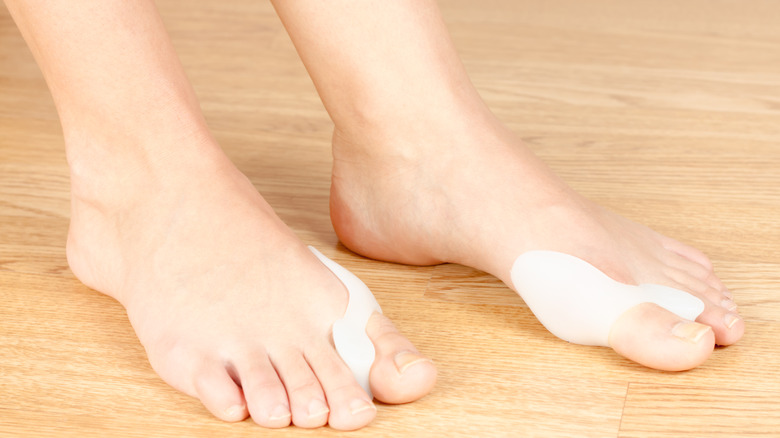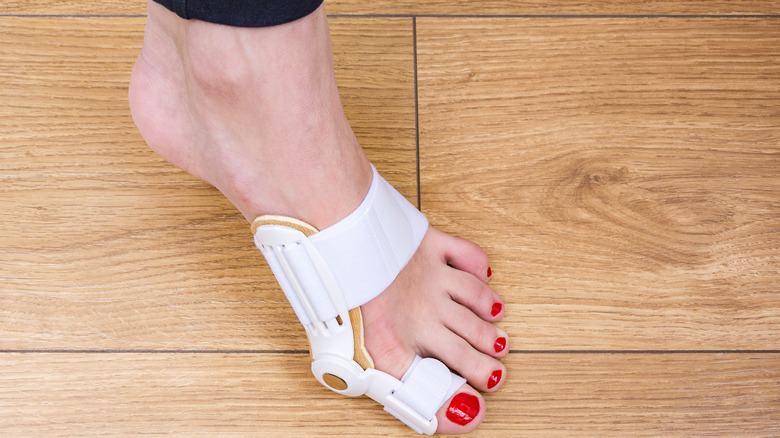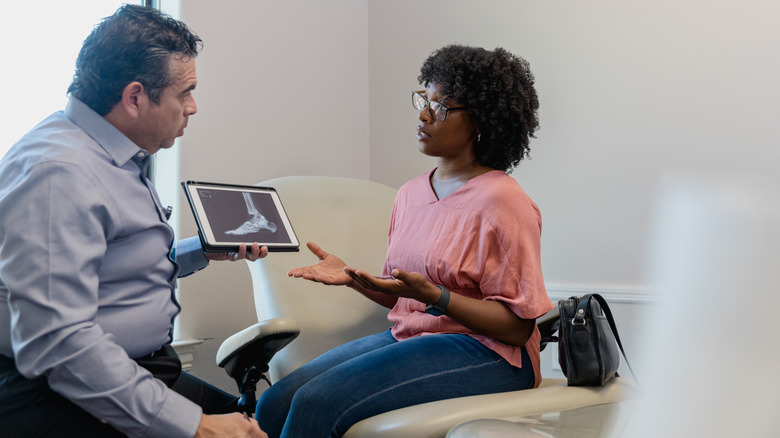Do Bunion Correctors Work?
While the term bunion is often used as a catch-all for any kind of bulge found on the foot, it's not actually a growth at all. Rather, a bunion is a bone deformity that progressively develops over time from continuous pressure placed on the big toe joint (via Cleveland Clinic). As the big toe leans further in the direction of the second toe and the connecting foot bone leans in the outward opposite direction, it creates a bump, as explained by experts at Novant Health. Medically referred to as hallux abducto valgus, bunions affect as many as 1 in 3 people in the U.S.
Those with bunions may experience pain or loss of sensation in the big toe, have trouble wearing shoes, be unable to flex their big toe, or may develop calluses or corns. Swelling and redness can also be expected. Those with foot injuries, inflammatory health conditions, or people with a genetic predisposition to bunions may be more likely to develop them.
What are bunion correctors?
Although bunions won't heal on their own once the damage has been done, it's still important to seek treatment. If not, the condition may worsen and lead to bursitis, hammertoes, bone spurs, or the development of osteoarthritis, according to experts at the Cleveland Clinic.
"My best advice is to have an evaluation with a foot specialist when you first see a bunion developing or have any pain in your big toe joint," podiatric surgeon Dr. Katherine Raspovic tells MedStar Health. "There are a few conservative treatment options that can help improve discomfort."
Steroid injections, physical therapy, use of nonsteroidal anti-inflammatory drugs (NSAIDs), or opting for wider shoes are all treatment methods for bunions that may help in terms of pain relief, but are there any options for realignment of the foot bones? Whether in the form of a splint or a sleeve, bunion correctors are devices that operate by holding your big toe in its proper position (via Healthline). But just how effective are they?
Success of bunion correctors may not be guaranteed
Research results are mixed when it comes to the efficacy of bunion correctors. A 2020 study published in the scientific journal Foot and Ankle Surgery found that there were no significant improvements in the angle of the foot bone between participants whose bunions were treated with splints and those who received no treatment intervention. However, participants treated with the splints did report greater degrees of pain reduction.
Conversely, researchers from a small 2021 study published in Gait & Posture found that female participants diagnosed with hallux valgus who were treated with orthoses experienced a greater correction of the hallux valgus angle. Even more, the devices made of softer material yielded greater comfort. Similarly, a 2021 systematic review published in BMJ Open found that devices with a toe separator made the biggest improvements in patients' hallux valgus angle. As a result, researchers deemed these devices an important method of treatment for bunions.
While the success of bunion correctors may not necessarily be guaranteed, surgery is an effective treatment option for bone realignment in patients with hallux abducto valgus.



